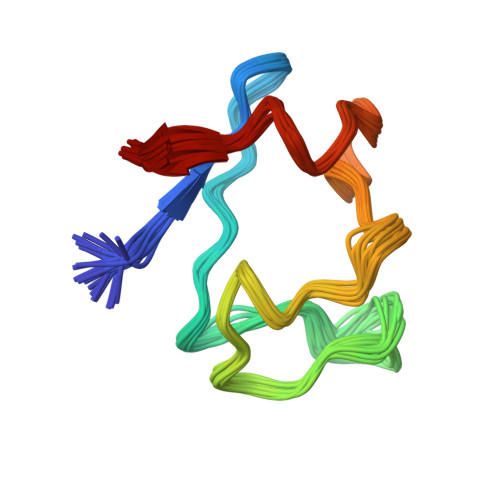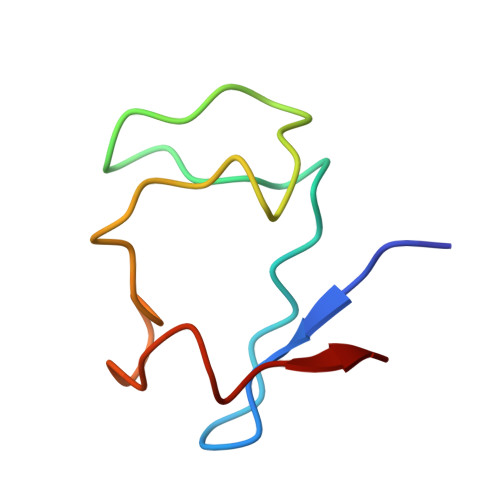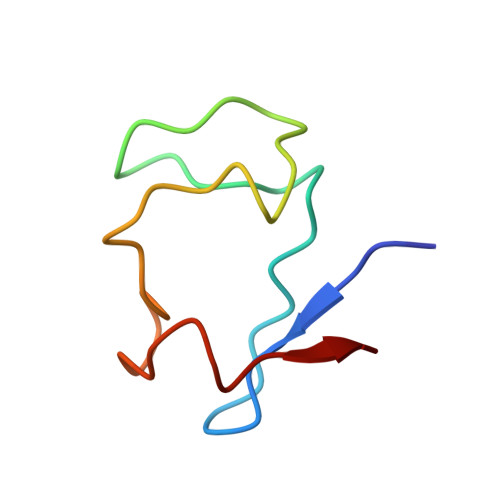NMR structure of Desulfovibrio gigas rubredoxin: a model for studying protein stabilization by compatible solutes.
Lamosa, P., Brennan, L., Vis, H., Turner, D.L., Santos, H.(2001) Extremophiles 5: 303-311
- PubMed: 11699644
- DOI: https://doi.org/10.1007/s007920100206
- Primary Citation of Related Structures:
1E8J - PubMed Abstract:
Rubredoxins are small, soluble proteins that display a wide variation in thermostability, despite having a high degree of sequence similarity They also vary in the extent to which they are stabilized by solutes such as diglycerol phosphate. Hence, they provide excellent models for studying the mechanisms of thermostabilization. Nuclear magnetic resonance (NMR) spectroscopy can be used to investigate interactions between molecules, as well as subtle changes in conformation in solution, and also provides a means to measure protein stability. The assignment of the proton NMR spectrum of the zinc rubredoxin from Desulfovibrio gigas is presented, together with its structure in solution. The stabilizing effect of diglycerol phosphate on rubredoxin is demonstrated and assessed by determining selected amide proton exchange rates; diglycerol phosphate at 100 mM concentration caused an additional structural stabilization of 1.2 +/-0.4 kJ/mol. The pattern of effects on the exchange rates is discussed in relation to the protein structure.
Organizational Affiliation:
Instituto de Tecnologia Química e Biológica, Universidade Nova de Lisboa, Rua da Quinta Grande 6, Apartado 127. 2780 Oeiras, Portugal.
















